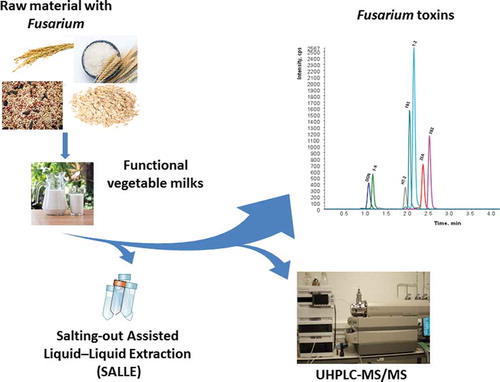- Acknowledgements: The authors gratefully acknowledge the financial support of the Spanish Ministry of Economy and Competitiveness (Secretary of State of Research, Development and Innovation) [Project ref: AGL2015-70708-R].
- Authors: A.M. Hamed, N. Arroyo-Manzanares, A.M. García-Campaña, L. Gámiz-Gracia.
- Reference: Food Additives & Contaminants: Part A 34 (2017) 2033-2041.
Vegetable milks are considered as functional foods due to their physiological benefits. Although the consumption of these products has significantly increased, they have received little attention in legislation with regard to contaminants. However, they may contain mycotoxins resulting from the use of contaminated raw materials. In this work, ultra-high-performance liquid chromatography tandem mass spectrometry has been proposed for the determination of the most relevant Fusarium toxins (fumonisin B1 and B2, HT-2 and T-2 toxins, zearalenone, deoxynivalenol and fusarenon-X) in different functional beverages based on cereals, legumes and seeds. Sample treatment consisted of a simple salting-out-assisted liquid–liquid extraction with no further clean-up. The method provided limits of quantification between 3.2 and 57.7 µg L−1, recoveries above 80% and precision with RSD lower than 12%. The method was also applied for studying the occurrence of these mycotoxins in market samples of vegetable functional beverages and deoxynivalenol was found in three oat-based commercial drinks.




